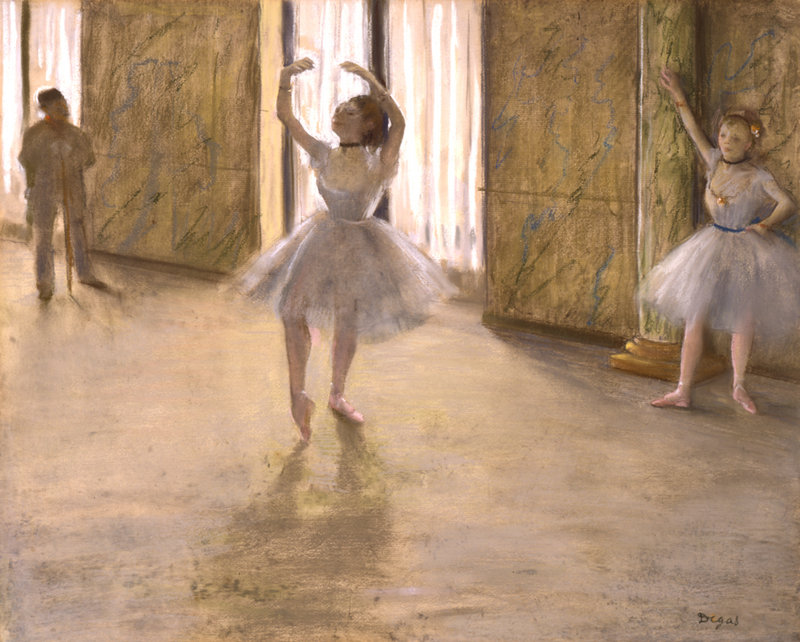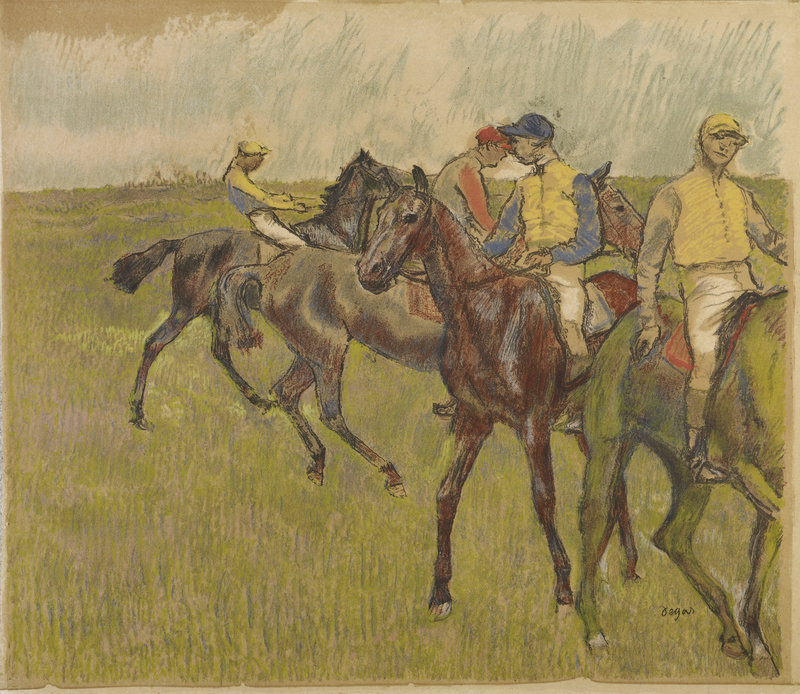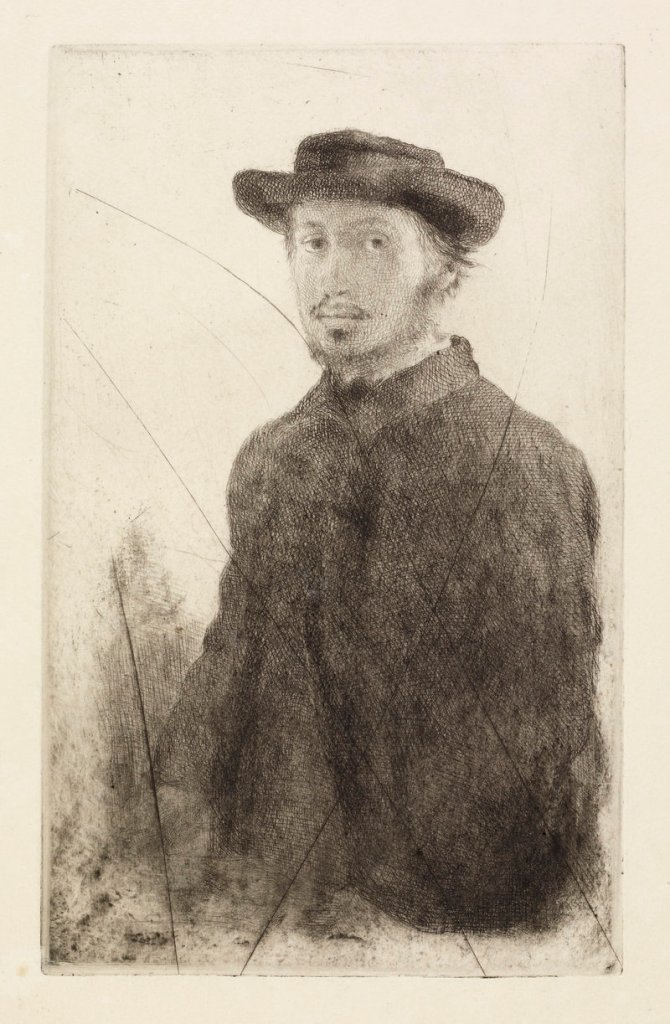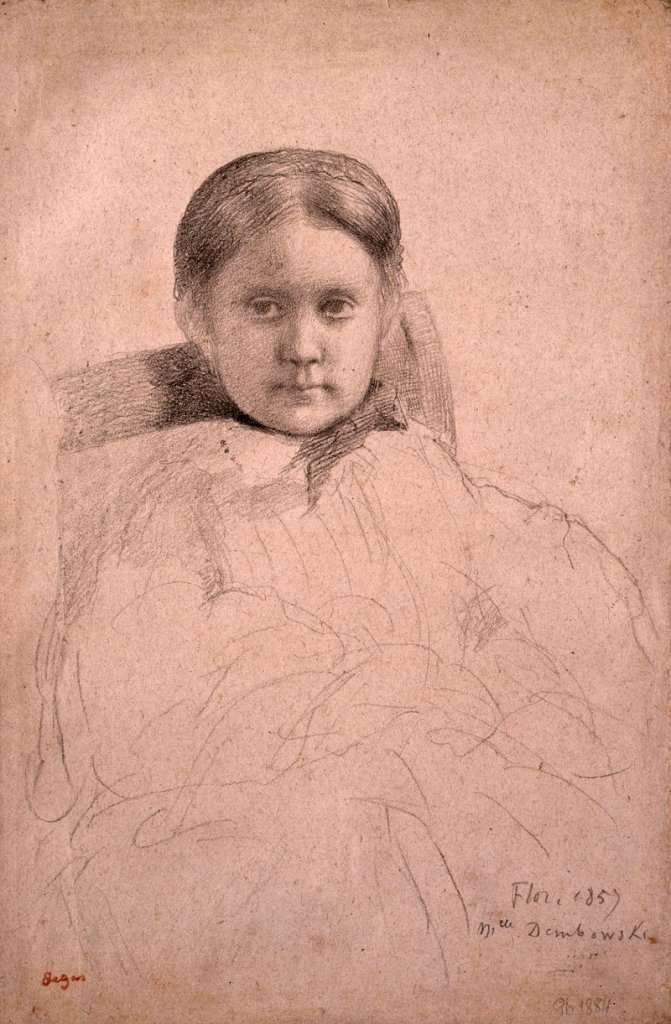Edgar Degas (1834-1917) was the most intelligent artist of his era.
His work combined a humanistic element with a modernist perspective that was unique, said Robert Flynn Johnson, who has dedicated much of his life to collecting works on paper by the artist.
Johnson’s contention about Degas’ lofty status hinges on the idea that the artist was more fundamentally concerned with the human condition than his Impressionist peers. The master’s paintings, he said, “appeared to me to be the visual equivalent” of an Edward Albee play or something by Eugene O’Neill.
We see much of that human emotion in “Edgar Degas: The Private Impressionist,” which opens Thursday at the Portland Museum of Art. It is the museum’s major winter-spring exhibition, and will be on view in the first-floor galleries through May 28.
Johnson’s collection forms the bulk of the exhibition. But visitors should attend this show with the knowledge that it does not feature Degas’ most important or recognizable paintings.
In fact, there are no paintings at all. This exhibition is comprised of more than 100 drawings, prints, pastels and photographs, as well as sculptures.
The museum has buttressed the Johnson collection with other works by Degas from its own collection as well as pieces on loan. It also includes art from artists in Degas’ circle to provide context to his times.
Margaret Burgess, the museum’s associate curator of European art, expects the show to build on the momentum of major Degas exhibitions last year in Boston; Washington, D.C.; and elsewhere.
“Degas is on the forefront of people’s minds and eyes. This seems to be the year of Degas, and we are thrilled to be a part of that,” Burgess said. “We hope that visitors who got engaged at the MFA show (in Boston) will continue their curiosity about Degas through his works on paper. This show is special and different in that these are very intimate sketches and early sketches.
“This show is not filled with the works that most people know. It’s filled more with these lovely intimate portraits of family members and friends.”
Born in France, Degas is considered the founder of Impressionism. He is best known for his depiction of the human body. Indeed, the MFA show last fall featured nothing but his nudes. He also is closely associated with ballet and horse racing, and the PMA show includes some images that draw on his interest in those subjects.
But many of these works are informal sketches. We see softly drawn self-portraits and portraits of friends and acquaintances. On many slips of paper, we see the result of his sketches of the work of old masters that he completed while seated in the galleries at the Louvre.
“These works are so immediate and intimate, you can almost imagine him sketching these right there in the museum and sorting out his early training through draftsmanship,” Burgess said.
The bulk of the PMA show consists of 24 drawings, 20 prints, a handful of photographs, monotypes and sculptures. Most of the work covers a 40-year period, beginning in the 1850s. In his early 20s at the time, Degas moved about Paris and other European cities working on his skills as an artist.
He took to heart the advice of a mentor, Jean Auguste Dominique Ingres, who told him, “Draw lines, young man, and still more lines, both from life and from memory, and you will become a good artist.”
Degas drew like a madman, traveling to Italy to copy the work of the masters. He made his way back to Paris and eventually to New Orleans, where he had family, and then back to Paris in the 1870s where he resided over the burgeoning Impressionist scene. Degas organized many of the major Impressionist exhibitions in Paris, and it was then and there that he made many of his most famous paintings.
Out of necessity and choice, Johnson concentrated his collecting on works on paper. “Not only because of limited funds, but also because of the medium’s inherently beautiful qualities and the relative abundance of interesting works then available on the market, I made drawings a focal point of my collecting,” he writes in an accompanying catalog essay.
Johnson notes that the diminutive scale of these works, as well as their delicate nature, force the viewer to pay “thoughtful attention” to them. Indeed, many of them appear to be so faded — or perhaps just drawn so lightly — that they require concentration.
Because the intent of this exhibition is to reveal something about the artist as a human being, visitors can also see the work of his peers. Works on paper by Mary Cassatt and Paul Cezanne are included, as well as several works that are part of the PMA collection or are on loan to the museum. These include loans from PMA benefactors Scott M. Black and Les Otten.
Staff Writer Bob Keyes can be contacted at 791-6457 or:
bkeyes@pressherald.com
Twitter: pphbkeyes
Send questions/comments to the editors.






